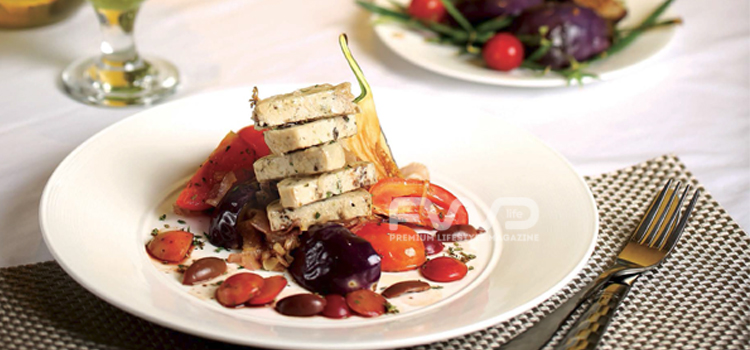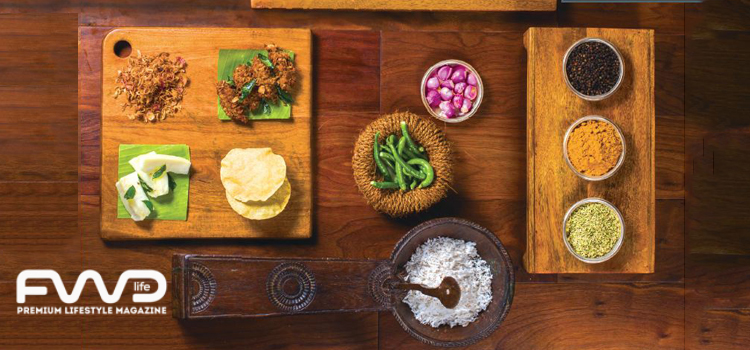Living
The Street Food Shuffle – Casino Hotel
Three chefs reveal their culinary innovations based on nostalgic street food they grew up eating
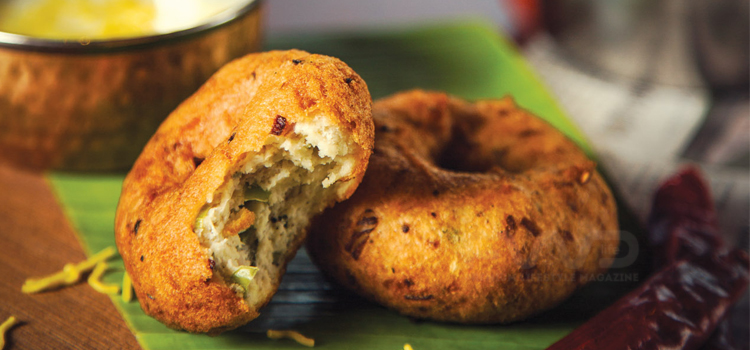
Three chefs reveal their culinary innovations based on nostalgic street food they grew up eating
Sample this: a fresh scoop of dahi vada ice cream sprinkled with some sev; grilled anchovies with coconut puree and sundried pesto; fondant potatoes slow-cooked and stewed in stalk and thyme paired with light snapper goujons. Would you ever imagine seeing these on the menu when you go scouting for street food while on holiday? Here is street food with a twist as from the kitchens of three leading chefs of Kochi who went on a trip down memory lane and brought it back for us on a plate, as curated gourmet dishes.
The Not so Small Natholi
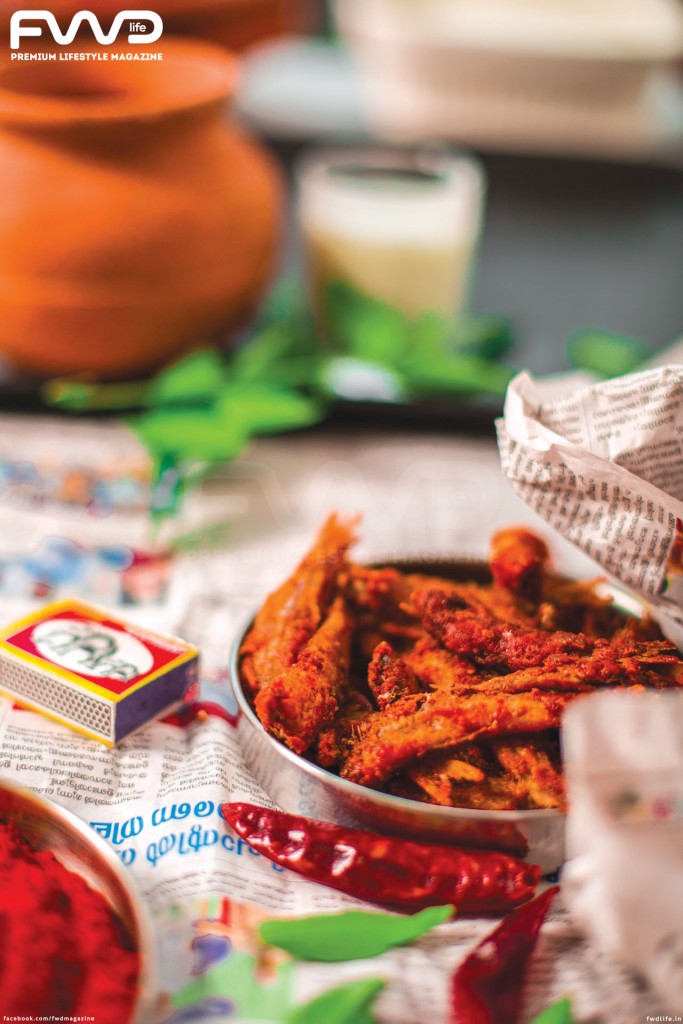

Chef Asif Ali
Executive Chef
Casino Hotel, Kochi
His Pick: Natholi (Anchovies) and Sardines
Natholi (anchovies) and chala (sardines) are staple choices of fish in the coastal haven of Kerala. Smelling pungent, but tasting divine, they are delicacies people relish both both at home, and outside.
These are served on on sheets of paper, and a glass or bottle of toddy or palm wine. This, added with the aesthetic feel of the thatched roof of a toddy shop, and the sea breeze (if located on a beach) is a muchrevelled dining experience in the state. We asked chef Asif to reinterpret his favourite dish. Fine dining is easily misconstrued as something too swanky, but chef Asif believes that the art of balancing taste with health comes with a lot of experimentation while overlooking the dubious notions of being overpriced.
As the saying goes, “natholi oru cheriya meen alla” (natholi is not a small fish), what made it catch your attention?
I have always enjoyed street food which is available in beaches, like fish stalls of Marina Beach in Chennai and the chat stalls of Bombay Chowpatty. In Kochi, I think of quick fried food and what comes to mind immediately is
natholi.
For something that just requires deep frying, what was your signature take on it?
I believe that food is only tasty if healthy. So while trying to reinterpret natholi, I wanted to ensure that none of the omega 3 fatty acids are lost and it’s preserved to the fullest without denaturing it. When fish is deeply fried the nutrients are lost. It is also very unhealthy because it carbonises the masala and the fish.
How would you explain your reinterpretation on natholi?
The biggest challenge was maintaining the crispiness without using the technique of deep frying. Thus, I brought in a contemporary spin by creating a Natholi wafer that’s toppled with sundried pesto and coconut curry leaf pesto. I can enjoy it with one bite and it’s also made to be crisp using a sandwich grill.
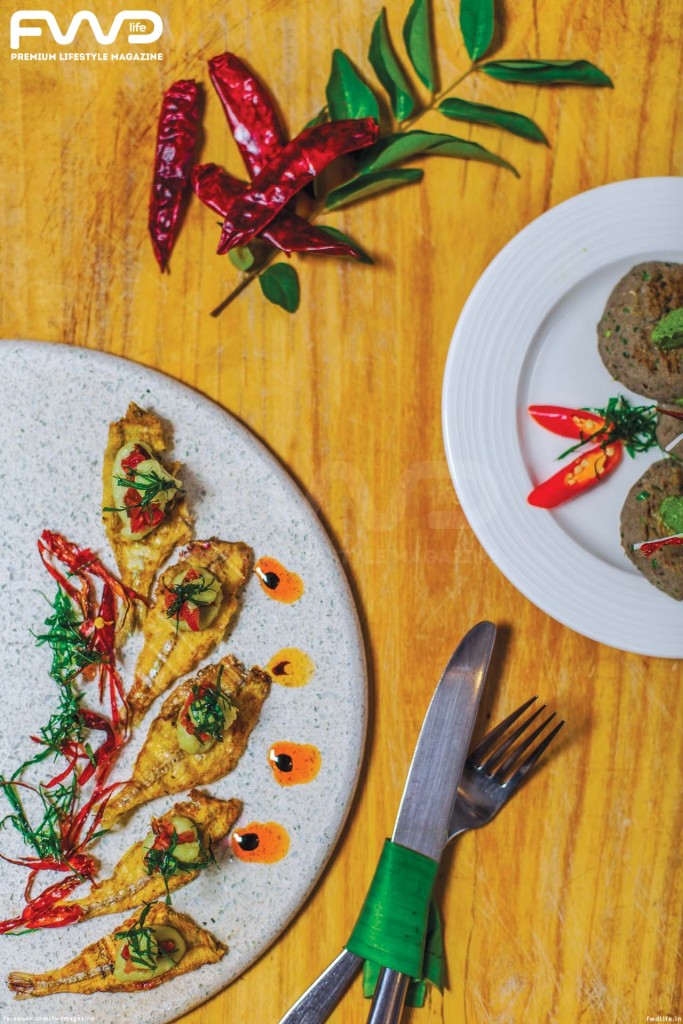
What other fish do you experiment with?
Sardines is another common food that’s enjoyed in street food shops. It is best enjoyed when charred. What I did was medium cook the sardine meat by first mincing the fish with the bones, mixing it with green masala (ginger, garlic, shallots and kandari), wrapping it in aluminum foil and then steam it. It can be presented in the form of a kabab.
What would like to say about street food?
Healthy food can also be tasty. I hence try to experiment with street food while also remaining committed to my principle.
The Humble Piping Hot Vadas
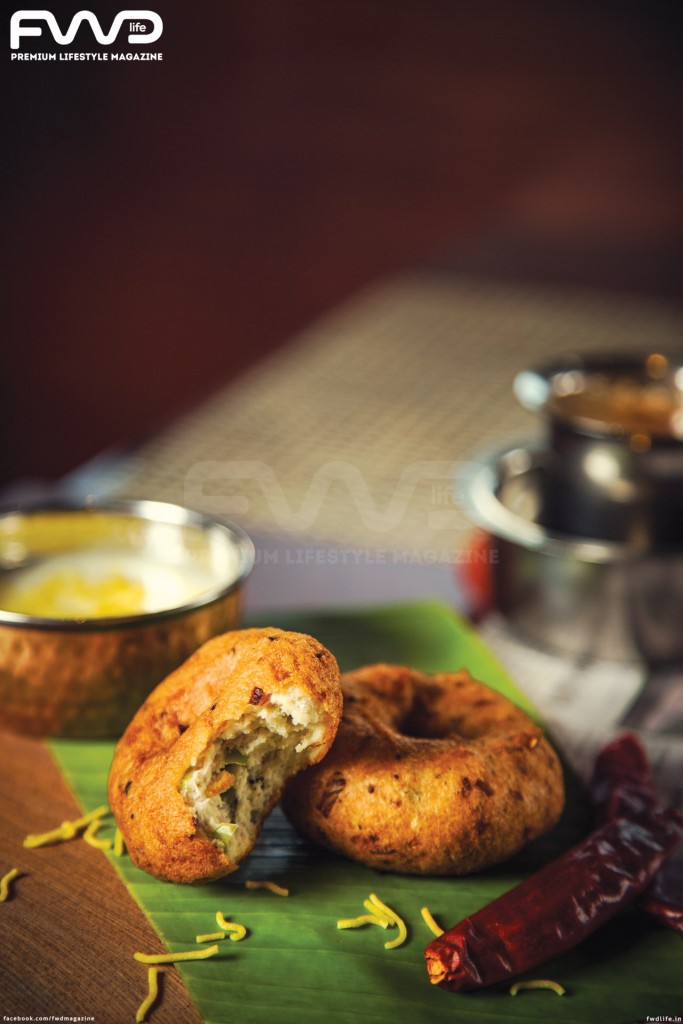

Chef Michael Saju
Executive Chef
Holiday Inn, Kochi
His Pick : The Classic ‘Vada’
As many would travel around the world with a suitcase, or camera, chef Michael travels with his beloved pack of cutlery. It is his companion on explorations around streets and lanes, for local street food and so his tales are often infused with trademark ingredients. Reinterpreting a dahi vada ,he brings a dish to the shores of Kerala that has bowled us over.
How did the humble vada entire your life?
During my 12th grade tuition days in Indore , my friends and I would go for leisurely strolls to indulge in street food. There was one stall that sold sumptuous items.My most favourite was the dahi vada (dahi is yoghurt), and loved the way the cook prepared it. The consistency was just right and he always made it according to my taste, and often would be his treat. His son runs the stall now.
From vada to ice-cream?
The greatest joy for a chef is to innovate and present food that has a great visual appeal. When I thought of vada it immediately took me to the dahi vada. I thought of making a smoother version. I whisked the yoghurt until it got a smoother consistency, then I made a scoop out of it and stored it in the freezer.
So what’s the scoop about your treat?
It was an idea that I had in my mind for a while and wanted to experiment. It worked out on the first trial. The general conception is that dahi vada can only be enjoyed when the vada is immersed in a bowl full of yoghurt. I wanted to change this perception. While making the ice cream the trick is to use mild yoghurt, and not too sour. The acidity has to be balanced with tamarind sauce made from fresh tamarind pulp. It should be served at room temperature, and the ideal time is to serve it 30 minutes after removing it from the freezer, so you won’t have a thawed dish. (he slides the spoon through the scoop)
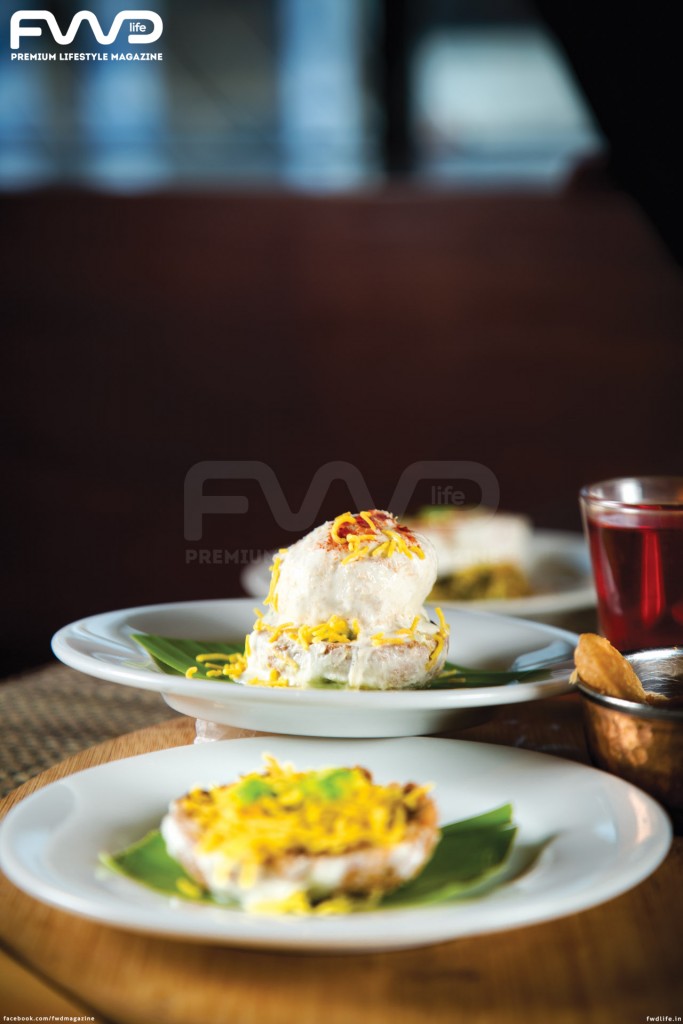
What is the one thing you truly appreciate about street food?
People say that street food is not hygienic. One thing I appreciate about street food is that their ingredients are fresh since they do not have storage facilities like a fridge. I have noticed the pani or water used for the pani puri will be fresh, while dahi is purchased every day, I must say that’s one thing that makes their food immensely tasty.
Which place fascinates you most for its street food culture?
Raised in Madhya Pradesh, I was fascinated by its diversity of culture. When you take a walk down the streets, there are food stalls brimming with all sorts of delicacies.People appreciate and enjoy these different varieties. I grew up with the belief that taste should never be compromised and customised to a particular place or cuisine. The best piece of advice I have received is, ‘you can compromise on your clothes but not on your food’.
Coastal Pride: Fish and Chips
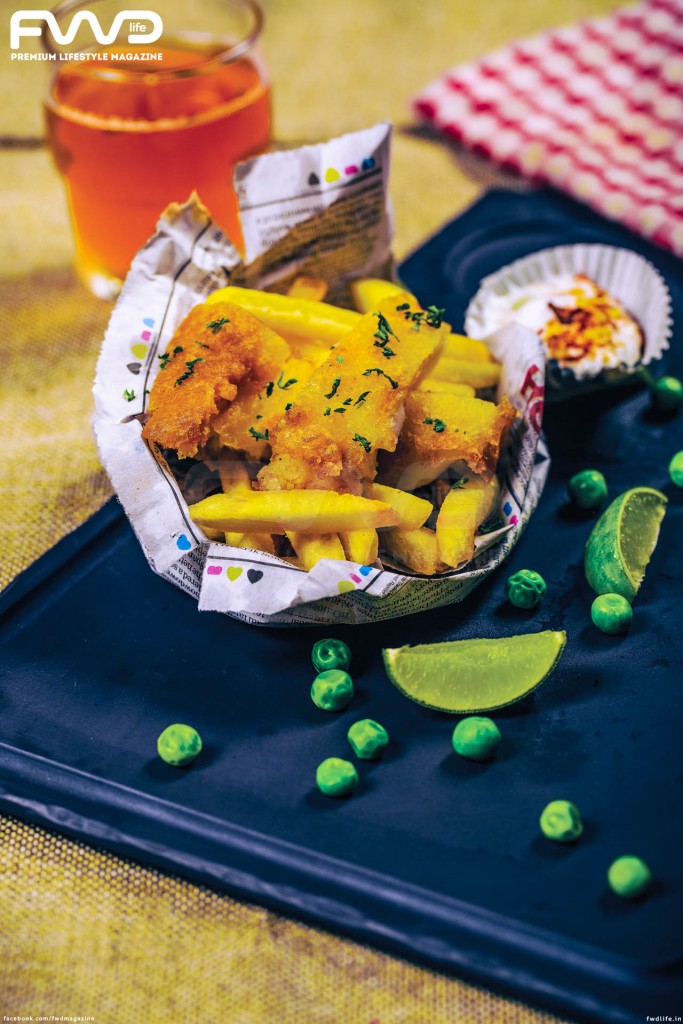

Chef Rajeev Menon
Executive Chef
Crowne Plaza
Kochi
His Pick: Fish & Chips
When chef Rajeev mentioned fish and chips for his innovative recommendation, we imagined a trip to London to enjoy what the British love – good old fish and chips; a perfect accompaniment to the sultry shades of cool weather. Smothered in some salt and soused with vinegar, the quintessential British dish instantly won over his palate. For the eight years he spent in London, and we were thrilled to see his interpretation.
Where did you find the most memorable order of fish and chips?
Croydon Market used to be a interesting place, especially on Sundays. I used to love the fish and chips there; they usually serve it with mushy peas and something local called malt vinegar which helps reduce the grease that is found in the fish. Borough Market, situated right under London’s railway lines and near the King’s Bridge. It is known as the melting pot of global cuisine.
How did fish ‘n chips make it from the street into a room with four walls?
Earlier, fish and chips wasn’t a meal that was very common, rather a dish that was enjoyed in the coastal areas. However, when the railways got built, fish became more accessible inland and could be transported to markets
in and around London. Soon, fish and chips grew popular in the mainland too.
How do you reinterpret the classic fish and chips?
I looked more into the technique used and the customisation of flavour. Instead of mushy peas, I prepared a purée that was fused with some mint. Fries are common; so I prepared it as fondant. In this French technique, the potatoes are slowly cooked in butter and stock and then placed into the oven. Much of the stock evaporates while only a residue remains in a mixture of garlic, thyme and chicken. Separately, the snapper fish was lightly fried as goujons. This was served with blanched tomatoes, for a hint of acidity.
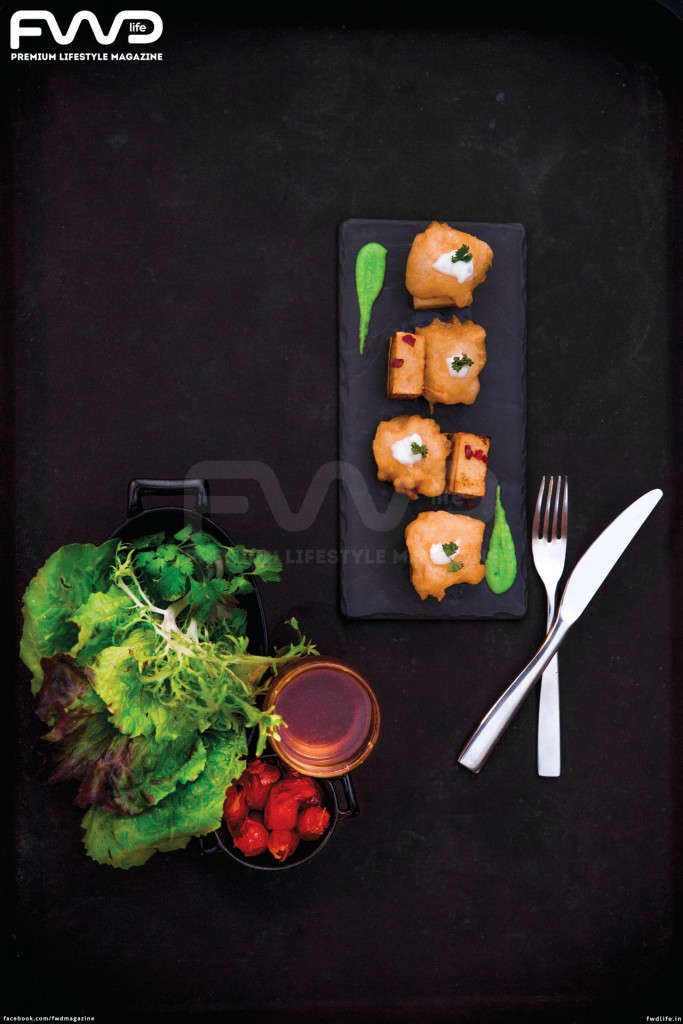
If you had to reinvent the dish, how would you do it?
Fish and chips roll would be interesting; the roll would have a spread of tartar sauce paired with a nice and crisp salad. What is your signature ingredient? For really good fish and chips the secret is the batter; it must be light. My signature ingredient is a pinch of turmeric. The barter looks more golden and the taste is not affected.
What do you love about street food culture?
When it comes to fine dining, things are so complicated, especially with the techniques. Street food is uncomplicated and simple and easily available, that’s a good thing for uncontrallable cravings.
Words, Styling and Conceptualisation by Atheena Wilson Photographs by Arun Menon
Art
Navratri 2024: Celebrating the Nine Colours and Their Significance
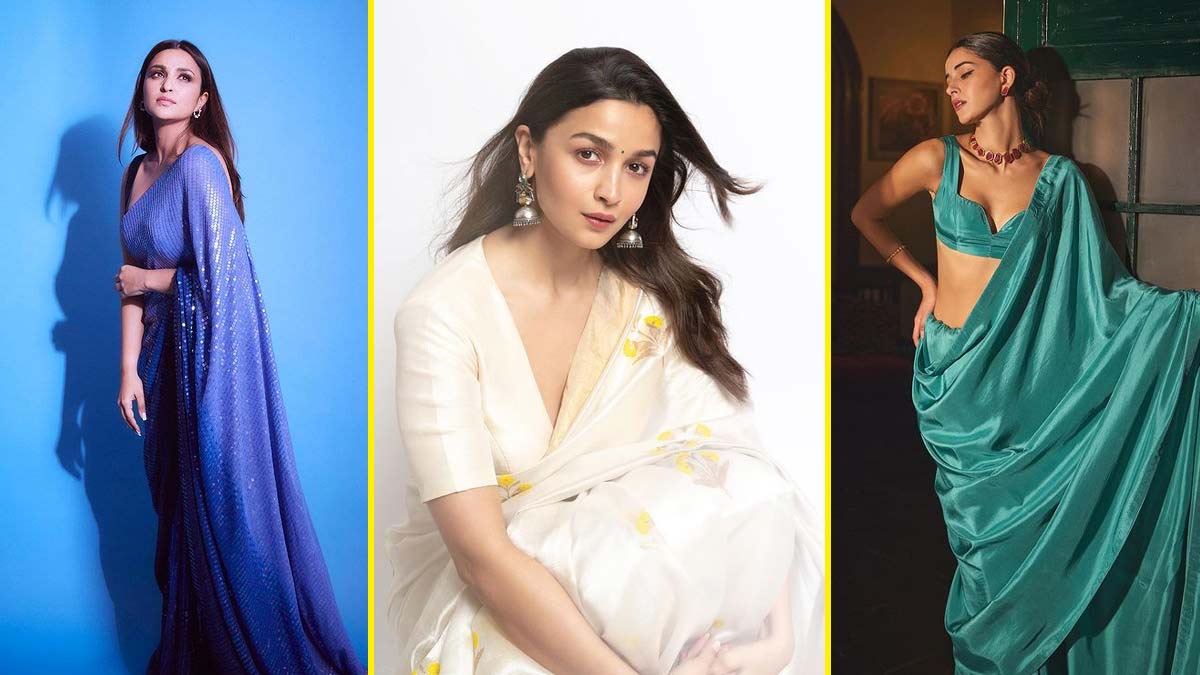
Navratri, the festival that spans nine nights, is one of the most auspicious and widely celebrated festivals in India. Dedicated to the worship of Goddess Durga in her nine forms, each day of Navratri holds special significance, marked by a distinct color that carries deep spiritual and cultural meaning. As we prepare for Navratri 2024, let’s explore the nine colors associated with each day, their significance, and how they inspire devotion, positivity, and harmony.
Day 1: Yellow
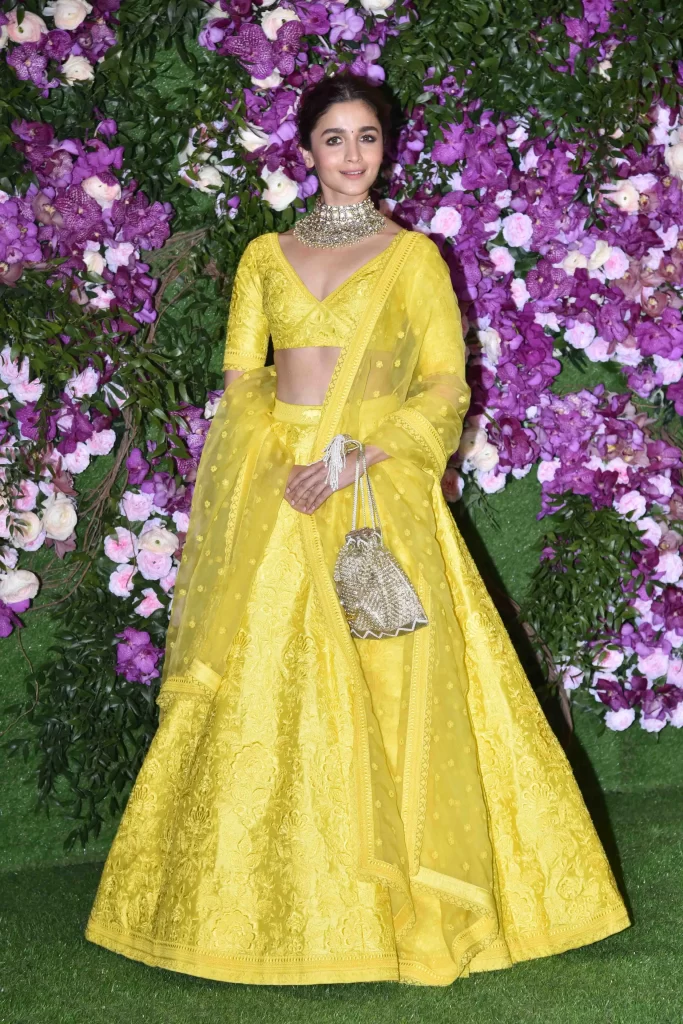
On Thursday, embrace the uplifting energy of yellow as you celebrate Navratri with optimism and joy. This warm and cheerful color symbolizes happiness and radiates positivity, keeping you in high spirits throughout the day.
Day 2: Green
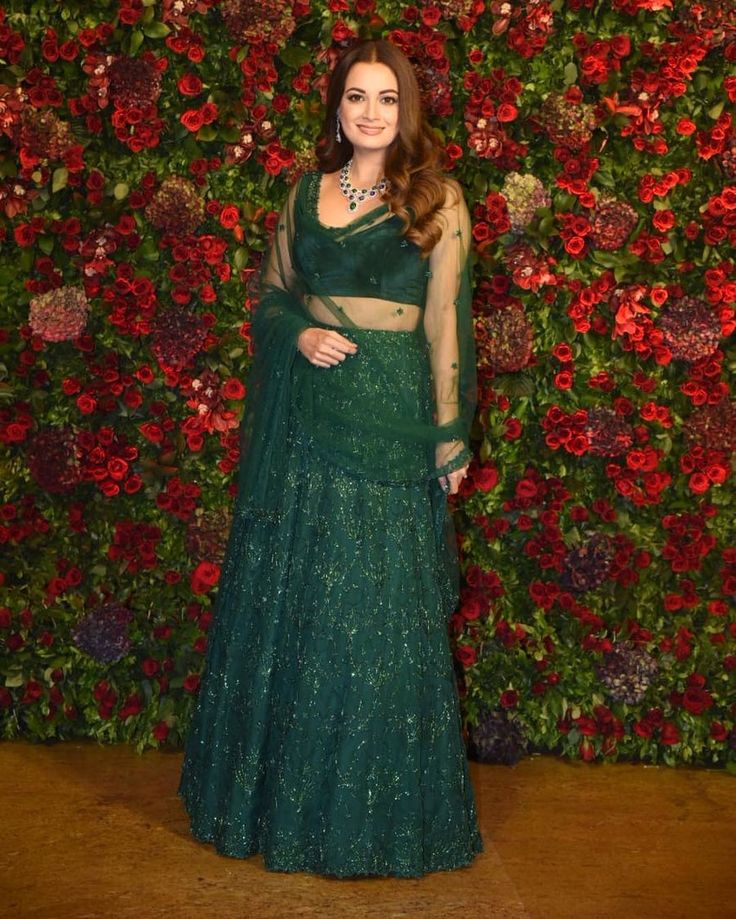
On Friday, wear green, a color that represents nature, growth, and harmony. It evokes a sense of peace and serenity, while also symbolizing new beginnings. Let the vibrant energy of green invite tranquility and the blessings of the Goddess into your life.
Day 3: Grey
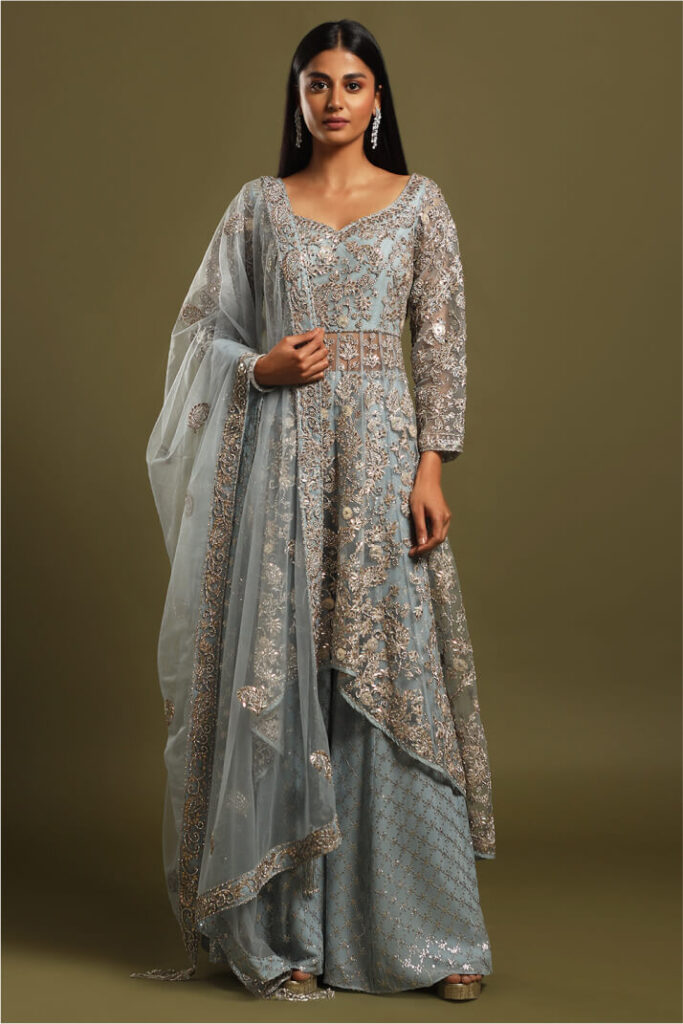
Saturday calls for the subtle sophistication of grey. This balanced color keeps you grounded and calm, symbolizing composure and understated elegance. It’s perfect for those who want to participate in Navratri with grace while making a refined style statement.
Day 4: Orange

On Sunday, adorn yourself in the vibrant hue of orange. This color embodies warmth, exuberance, and positivity. Wearing orange during Navratri invokes an upbeat energy, bringing vitality and a lively spirit to your celebrations.
Day 5: White
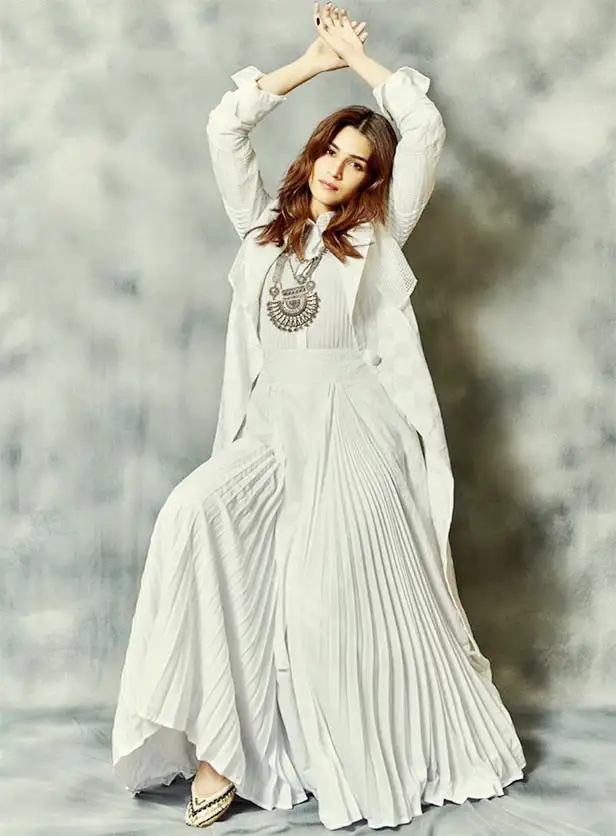
Start your Monday with the purity and serenity of white. Associated with innocence and spiritual clarity, this color invites inner peace and helps you connect with the divine blessings of the Goddess, offering a sense of security and calm.
Day 6: Red
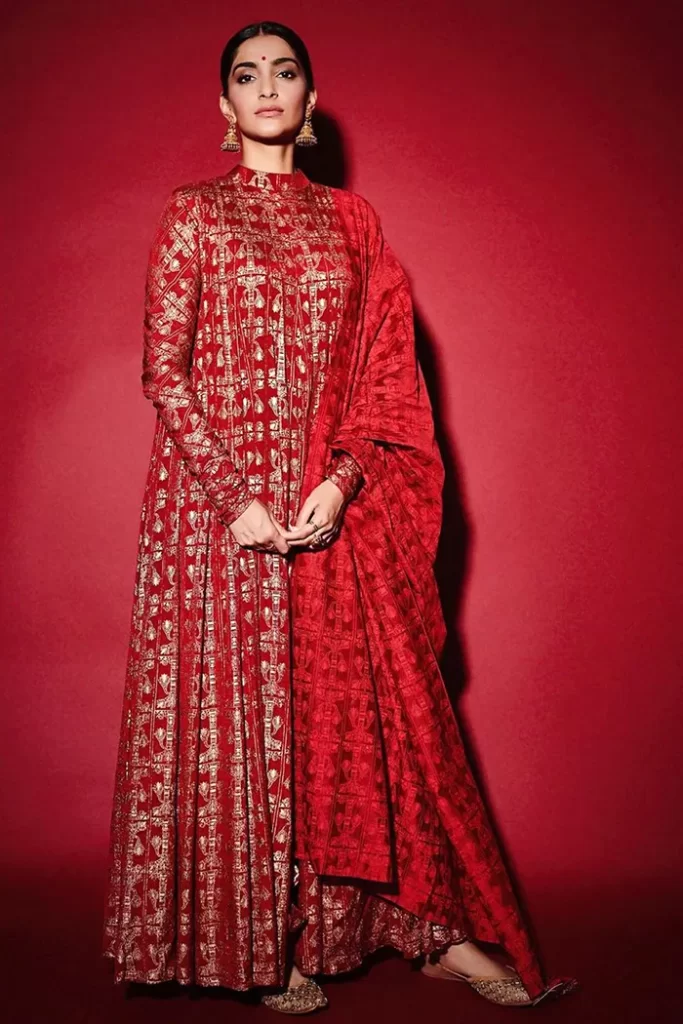
On Tuesday, red takes center stage, symbolizing passion, love, and strength. As one of the most auspicious colors, red is often offered to the Goddess in the form of a Chunri. Wearing red fills you with energy, vigor, and the vibrant spirit of Navratri.
Day 7: Royal Blue
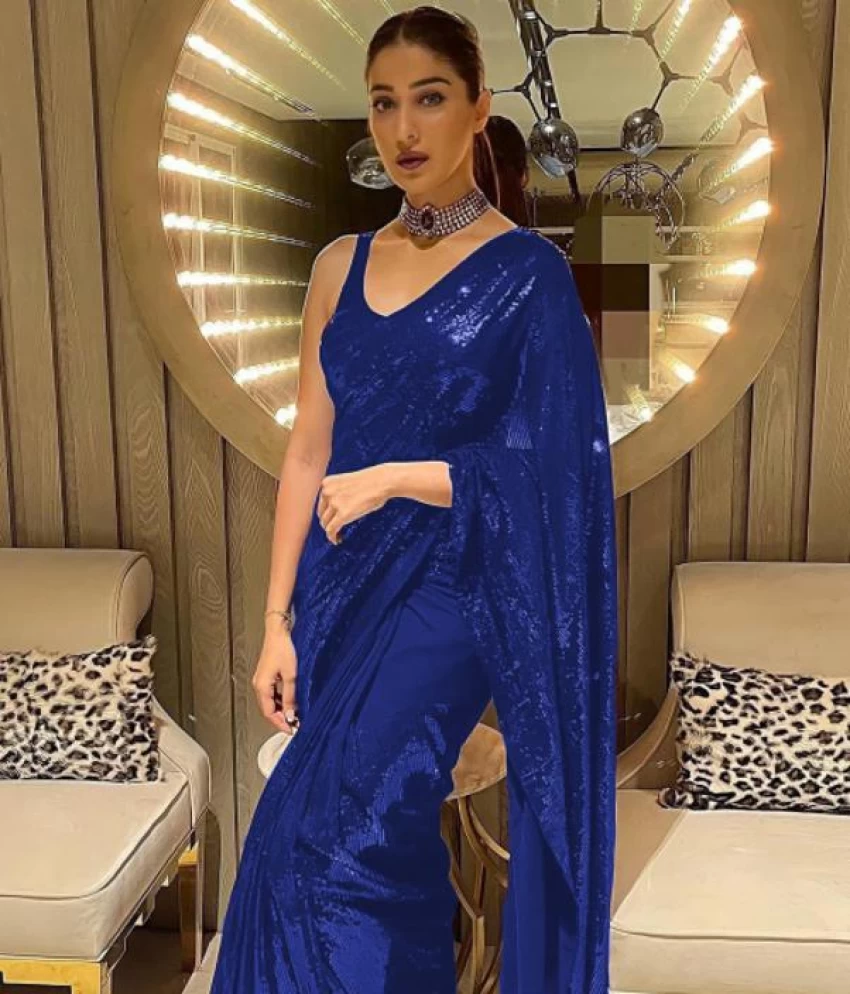
Wednesday’s color is royal blue, representing elegance, richness, and tranquility. This deep, vivid shade of blue exudes confidence and sophistication, making it an ideal choice for those who want to celebrate Navratri with style and grace.
Day 8: Pink
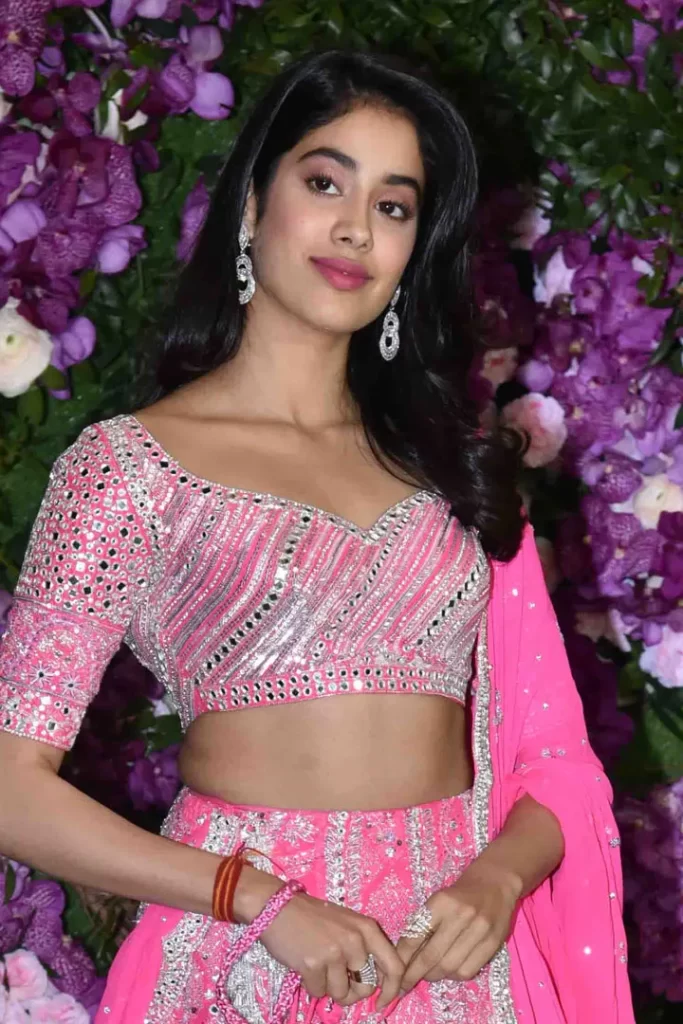
On Thursday, don the charming hue of pink, a symbol of universal love, affection, and harmony. Pink is a color that adds a soft touch of warmth and approachability, making it perfect for creating a loving and joyful atmosphere during the festivities.
Day 9: Purple

On the final day of Navratri, purple takes the spotlight. Associated with luxury, nobility, and grandeur, purple invites opulence into your life. Wearing this regal color while worshipping Navdurga bestows blessings of prosperity and richness, making it the perfect way to end your Navratri celebrations.
Luxury
Cartier’s New High Jewellery Collection is a Love For The Wild

In 2021, the American Museum of Natural History in New York presented Beautiful Creatures, an exhibition showcasing some of the most eccentric jewellery designs of the past century. One standout piece was the iconic crocodile necklace of Mexican actress María Félix, a loyal Cartier patron. Félix, renowned for her bold sense of style, famously strolled into Cartier’s Paris store in 1975 with her pet crocodile, requesting a necklace in its likeness. Cartier delivered, crafting two intertwined crocodiles encrusted with over a thousand emeralds and yellow diamonds. For Félix, crocodiles symbolized freedom, an embodiment of the spirit she associated with Mexico’s Golden Age of cinema.
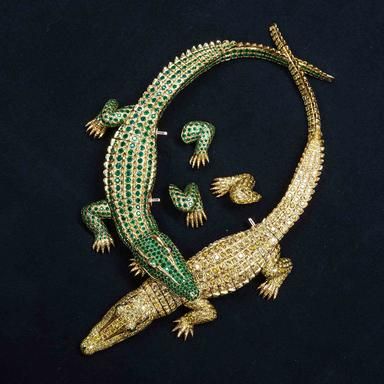
Fast forward to today, and Félix’s wildest dreams seem to have come to life at Cartier’s latest high jewellery collection, Nature Sauvage, previewed at the historic Kursalon Hübner gallery in Vienna. Among the star pieces is the Koaga necklace, a masterful creation where a zebra clasps an emerald-cut diamond and a 6.25-carat pear-shaped rubellite in its mouth. The zebra’s form is exquisitely rendered in alternating onyx stripes and pavé diamonds, making the creature feel almost lifelike.
The relationship between animals and jewellery has deep mythological roots, often glorified through rituals and symbolism. In ancient Egypt, scarab beetles were worn as earrings to signify respect for life’s cyclical nature. Meanwhile, in Hellenistic Greece, gods and goddesses took on the forms of winged creatures in adornment. So, what is it about animal-themed jewellery that continues to captivate us? According to Amanda Triossi, a jewellery historian based in Rome, the allure lies in our primal instincts: “Wearing wild animals like panthers or tigers gives one the sense of having conquered them. It’s empowering, as if you inherit the animal’s strength and attributes.”
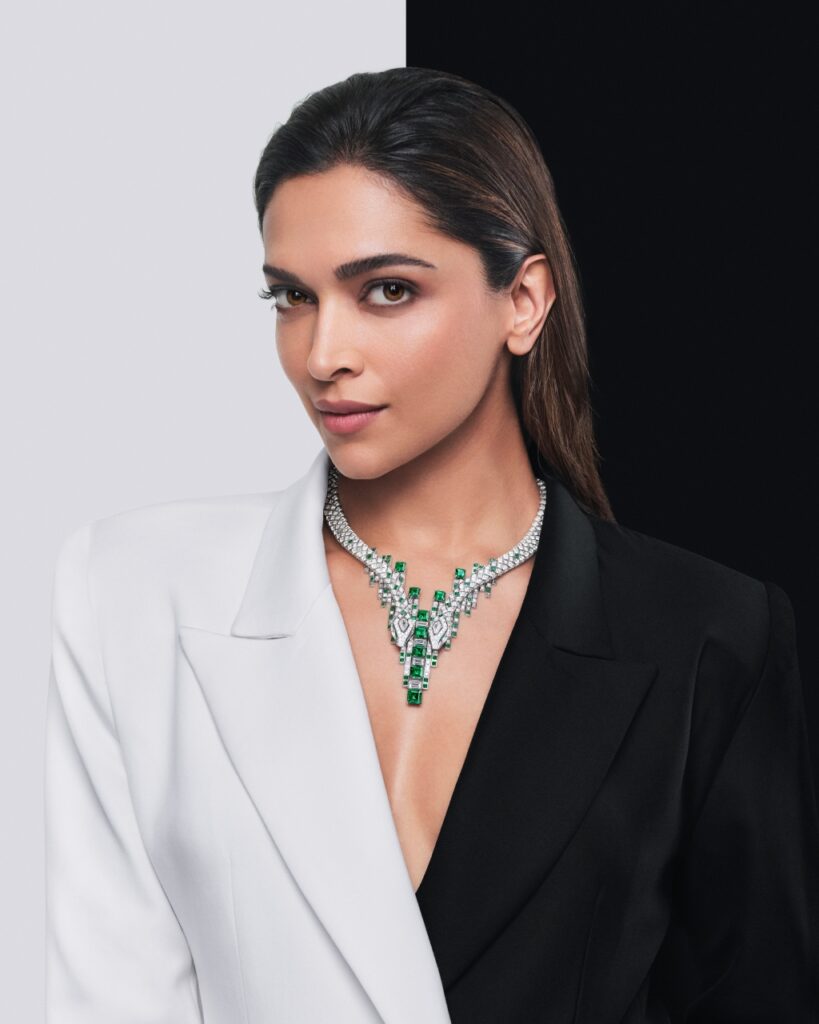
Cartier captures this essence beautifully in its Amphista necklace. Featuring two intertwined snakes with diamond scales set with emeralds, their heads adorned with kite-shaped diamonds, the necklace echoes ancient Chinese philosophy’s yin-yang balance. The pièce de résistance? Nine octagonal Colombian emeralds, weighing a total of 14.72 carats.
Triossi also notes that many historical heroes are often depicted draped in the skins of animals they’ve vanquished, a symbol of triumph. Today, jewellery transforms that symbol into something precious and eternal—animal skins reimagined in imperishable materials.
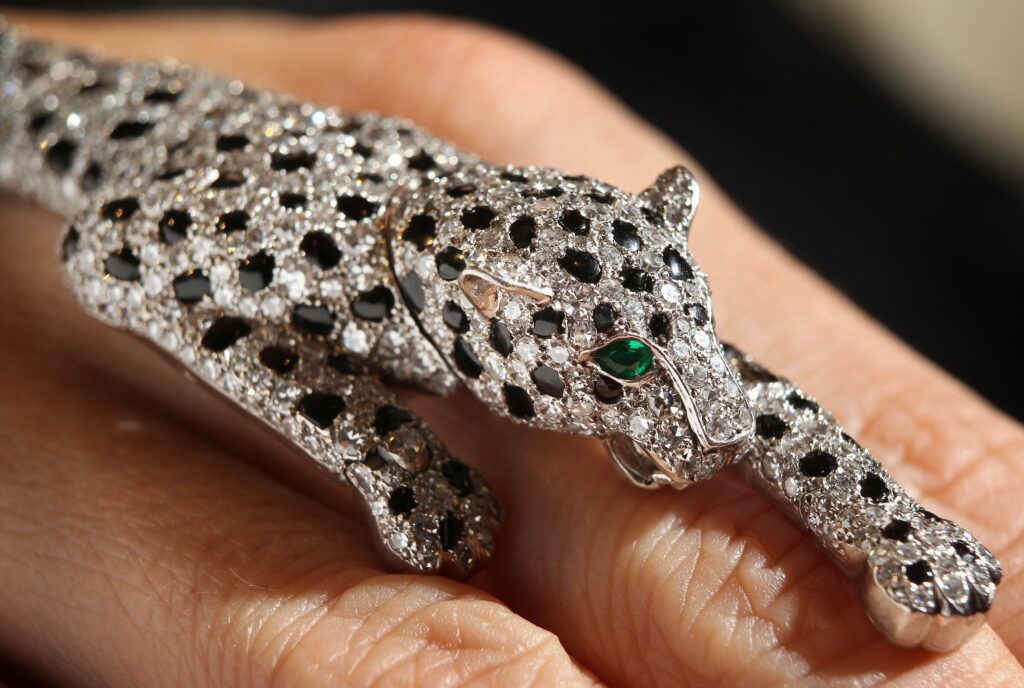
Later that evening, at a celebration held at Vienna’s Kunsthistorisches Museum, the largest in Austria, the enchantment of Cartier’s collection was heightened. The museum’s octagonal domes featured paintings of animals dancing with angels, setting the stage for a magical night. Guests were greeted by masterpieces such as Rembrandt’s Self-Portrait and Caravaggio’s Madonna of the Rosary, alongside Cartier page boys in their signature red hats. The evening’s soundtrack, a seamless blend of Bach and Kygo, was curated by DJ Gillian Sagansky, lending a modern twist to the classical ambiance.
The following day brought another cultural adventure—a visit to Otto Wagner’s Villa, a stunning summer palace designed by the famed architect. The paintings adorning the villa’s walls depicted animals in various forms—some caught in purgatory, others wandering the biblical bardo, with alligators restlessly emerging from swampy landscapes.
Luxury
Indian Craftsmanship Meets Italian Savoir Faire : Rahul Mishra x Tod’s

Quiet luxury was expected to dominate for a while, with many predicting that the return of bold, extravagant fashion would take its time. However, maximalism seems to be making a swift comeback, especially in the realm of designer collaborations. Hot on the heels of the vibrant, print-heavy H&M x Anamika Khanna collection, another limited-edition line has arrived, celebrating opulent luxury: Rahul Mishra x Tod’s.
As part of Tod’s T-Factory project, which features exclusive collaborations with creative innovators, this marks Indian couturier Rahul Mishra’s debut in the international accessories space.

Mishra is a true ambassador of Indian design. Along with his wife Divya Mishra, he leads his eponymous label, which has brought the essence of India to the global stage in remarkable ways. A regular at Paris Fashion Week and the first Indian designer to showcase at Paris Haute Couture Week, his creations have adorned celebrities like Zendaya and Mark Zuckerberg, and have graced magazine covers in South Korea, China, and Europe. With such a path-defining legacy, it’s no surprise that Mishra and his visionary label were Tod’s natural choice for their first-ever Indian collaboration.
Mishra describes this collaboration as a beautiful fusion of “Italian craftsmanship serving as the canvas for Indian vision.” Tod’s iconic Gommino loafers and mules, along with the Di Bag and T Timeless shoulder bag, have been reimagined with intricate resham embroidery, crystals, and sequins—all meticulously hand-embroidered at Mishra’s atelier in Noida. “It was a technically challenging process that took time to perfect. I can confidently say these are some of the finest bags and shoes you’ll ever witness, in terms of craftsmanship and longevity. Such pieces are forever,” Mishra proudly shares.
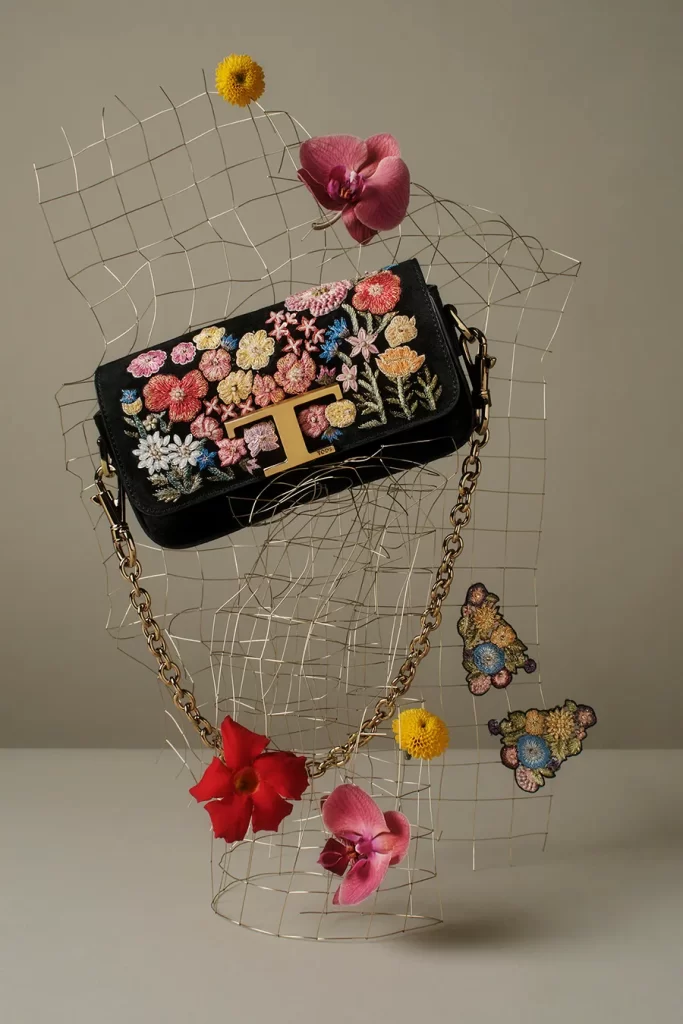
Crafted entirely between India and Italy, the limited-edition pieces from this collection are a true love letter to the artisanal heritage of both nations. “There’s a beauty in the teamwork here,” Mishra explains. “We received raw materials from Italy and worked on integrating our embroideries seamlessly into their leather. The pieces were then sent back to Tod’s, where they transformed them into stunning, three-dimensional products. In that sense, it’s been a genuine collaboration between Italy and India.”
Mishra firmly believes that the future of global design will be shaped by a global Indian aesthetic. “Just as French, Italian, British, and Japanese designs are now seen as universal,” he explains. This collaboration marks a significant step in advancing that narrative. “When you push the boundaries of ‘handmade in India’ to be respected at the pinnacle of luxury, everything else will naturally follow,” he emphasizes.
-

 Style11 months ago
Style11 months agoBridal Guide : Best Looks of Radhika Merchant Ambani
-

 Fashion1 year ago
Fashion1 year agoMost Discussed Ajrakh Saree of Alia Bhatt
-

 Entertainment1 year ago
Entertainment1 year agoBridal Bliss : All Bridal Looks of Swasika Vijay
-

 Movies1 year ago
Movies1 year agoA Nostalgic Journey Through Love &Cinema : Best Bollywood Romantic 90s Movies
-

 AD8 months ago
AD8 months agoPopular Curtain Fabrics to Consider for Your Home
-

 Events9 months ago
Events9 months agoBest of Fashion Looks : Diya Krishna Wedding
-

 Events8 months ago
Events8 months agoThe L’Oréal Paris Show at Paris Fashion Week 2024
-

 news8 months ago
news8 months agoLaapataa Ladies: Kiran Rao’s Social Satire Becomes India’s Official Entry for the 2025 Oscars







